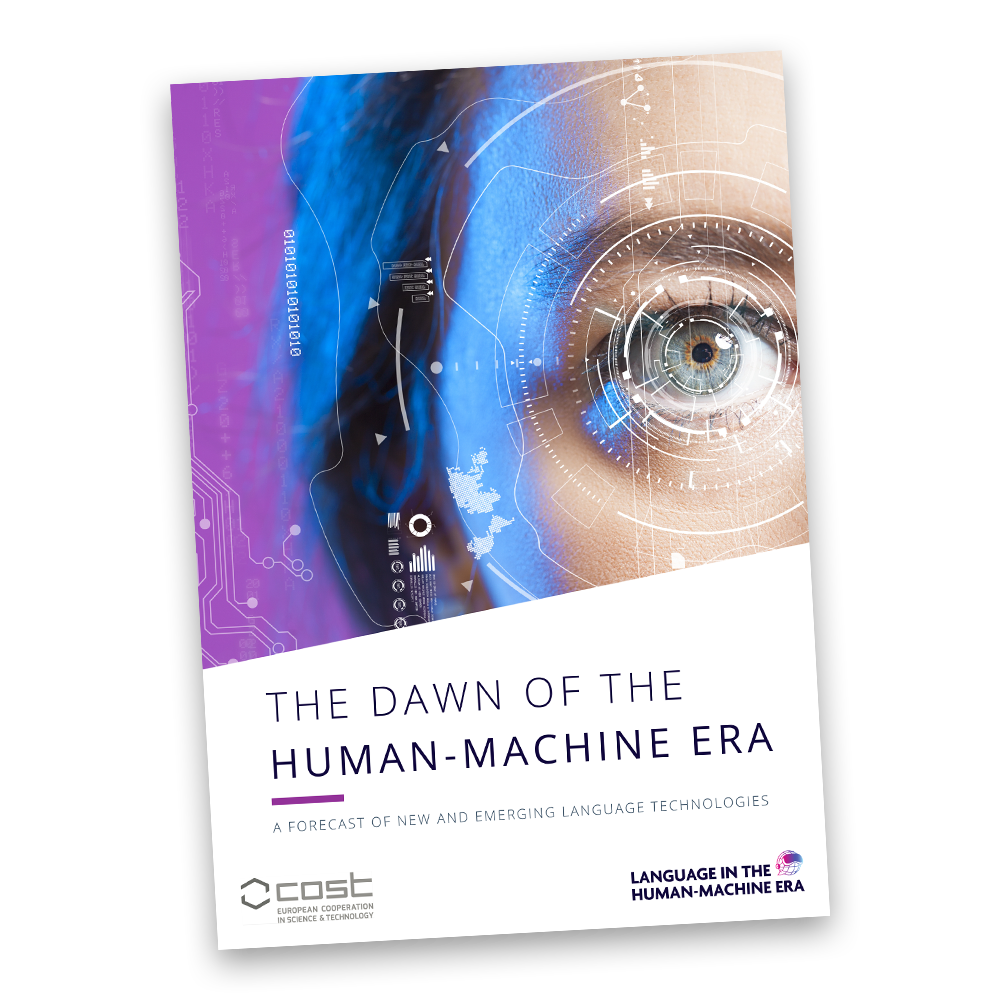The rewards and pitfalls experienced while producing the tech forecast report
LITHME is a COST Action that aims to bring together experts from a wide range of areas with an interest in Language in the Human-Machine Era. Earlier this year, LITHME published “The Dawn of the Human-Machine Era: A forecast of new and emerging language technologies” (Sayers et al., 2021). This report began life in October 2020 at the start of the network. Between then and 12 May 2021 (the date when the report was finalized), several online co-writing workshops took place, where 52 members of the network worked together in Google Docs while video-conferencing. The experience was very rewarding, but also bumpy and challenging at times. Here we share what we learned in the writing and editing sessions.
- Plan before you write.
It sounds so obvious, but the plan must be really specific for this specific document that you plan to write. Collaborative work is at the heart of the LITHME network and that is also reflected on the writing of the forecast report. Members of the network were invited to contribute their ideas and expertise in free form. Although this strategy proved effective in the beginning (brainstorming), as it enabled everyone to share their thoughts, its drawbacks were evident in the final editing stage. For example, the depth in which different topics were discussed varied significantly; some topics were discussed in excruciating detail, others were only listed. This showed how important it is to plan in advance and provide clear guidelines to all contributors. If you plan to collaboratively produce a document of more than 10 pages, write down the writing and the editing stages. For each stage, write down what the editors’ job would be, and what you expect the authors to deliver. Communicate your plans and expectations clearly.
- Use shared documents to write collaboratively.
The LITHME working groups and their members were invited to contribute to the forecast report from the beginning, by writing a shared Google Drive document. This allowed all the members to write collaboratively, in real time. This lesson may look obvious, however, it turned out to be not-so-obvious for everyone. The variety of online editors is huge, the preferences and the community cultures are very different. Some authors prefer to use Overleaf, some others never worked with LaTeX. Figure out early which technology you will use for writing and for your bibliography (another painful moment we mention below).
- Brief your co-authors on the value of difference and open-mindedness.
One of the greatest advantages of the LITHME network is its diversity – in gender, background, expertise, knowledge, age, … However, such a huge diversity also opens the door to disagreement among members, and it’s not always easy to reach a consensus when thoughts diverge. The job of the editors is to give structure to contradictory positions, to make different viewpoints tell a story, and to create a culture of creativity in the writing sessions. The job of the authors is to share what they know and to learn from others.
- Make sure your co-authors know the purpose and the target audience of the document.
And think futuristically. Although most of the members in the network conduct research to a different extent, LITHME is not a research project itself, and the forecast report is not a research publication. However, researchers tend to use their professional terminology and document structure typical for the community in which they publish. The job of the editors was to (ask the authors to) reformulate and explain some parts of the draft to make it more accessible. The professional heterogeneity of the network members was a great advantage.
- Ask your co-authors to provide complete references in a specific format.
Although the forecast report is not a research publication, it is a basic tenet of any document that someone else’s work or ideas are properly attributed to their authors via referencing. However, referencing styles vary across disciplines, and so does the amount of information required in each case. It could have saved hours of editors’ work if we had a reference management guideline for authors from the beginning.
- Communicate your expectations clearly while managing writing sessions.
While sharing their thoughts, some co-authors provided long lists of references to support their claims, others provided a link to web pages (some of which were no longer available), still others simply pasted a list of hyperlinks without explaining their reasoning. Some of the contributors were not sure about what they were expected to do. Others had limited time to share their knowledge and expertise.
- Ask experts to produce a specific short piece of content.
Writing workshops were very effective to identify the topics and the structure of the report. Nevertheless, little information was provided in some potential sections. In such cases, it turned out to be effective to ask particular members of the network to write a page about their field of expertise.
- Host a co-writing workshop to write collaboratively in real time.
In principle, if authors are invited to collaborate on a shared document, they can do it any time. This is the main selling point of such documents. However, we decided to schedule several two-hour co-writing workshops. In each session, members who were available joined us in a virtual room to contribute their ideas. Although in those sessions each member worked silently most of the time, occasionally the group also had a chance to discuss ideas. The writing workshops were extremely efficient because (1) the authors blocked their time to work on that document, (2) they helped to minimize writing management effort and (3) there was direct interaction between editors and contributors that was visible for all participants.
- Set up the typesetting tools in advance.
The job of publishing a report like the tech forecast is not over till it’s over, and the final editing is not the end. Don’t underestimate the typesetting work and all the things that can go wrong at that stage, from software licensing to missing fonts. These are just technical details, but they can delay your publication.
- Risk management.
It is a principle of Murphy’s law that “anything that can go wrong will go wrong”. So think in advance; what can go wrong in your collaborative writing project? We already listed several factors here such as ensuring that the content is produced, that the purpose and the target audience are clearly described, that the content is shared with all authors. We also mentioned the diversity management and the accessibility problems. However, other risk factors might exist for your project. Write them down and think how to deal with them.
Spread the word after all. Documents such as the tech forecast report, that are collaboratively written by a wide range of experts from different fields, are designed to be authoritative, yet accessible. Nevertheless, they will be useless if kept in the drawer. Advertise it, share it and re-share it with your community(ies), make sure everyone reads it.

Reference
Sayers, D., R. Sousa-Silva, S. Höhn et al. (2021). The Dawn of the Human-Machine Era: A forecast of new and emerging language technologies. Report for EU COST Action CA19102 ‘Language In The Human-Machine Era’. https://doi.org/10.17011/jyx/reports/20210518/1
Authors of the blog post:
Rui Sousa-Silva, Assistant Professor, WG1 Chair (ORCID: 0000-0002-5249-0617)
Sviatlana Höhn, Postdoctoral Researcher, LITHME Vice-Chair (ORCID: 0000-0003-0646-3738)

